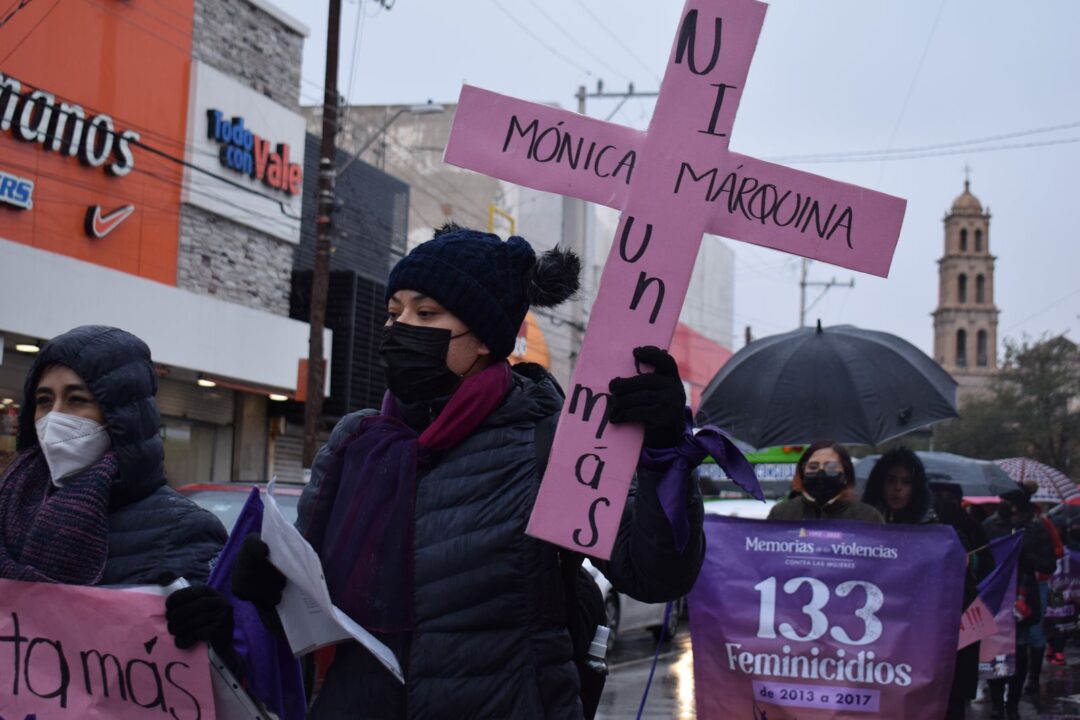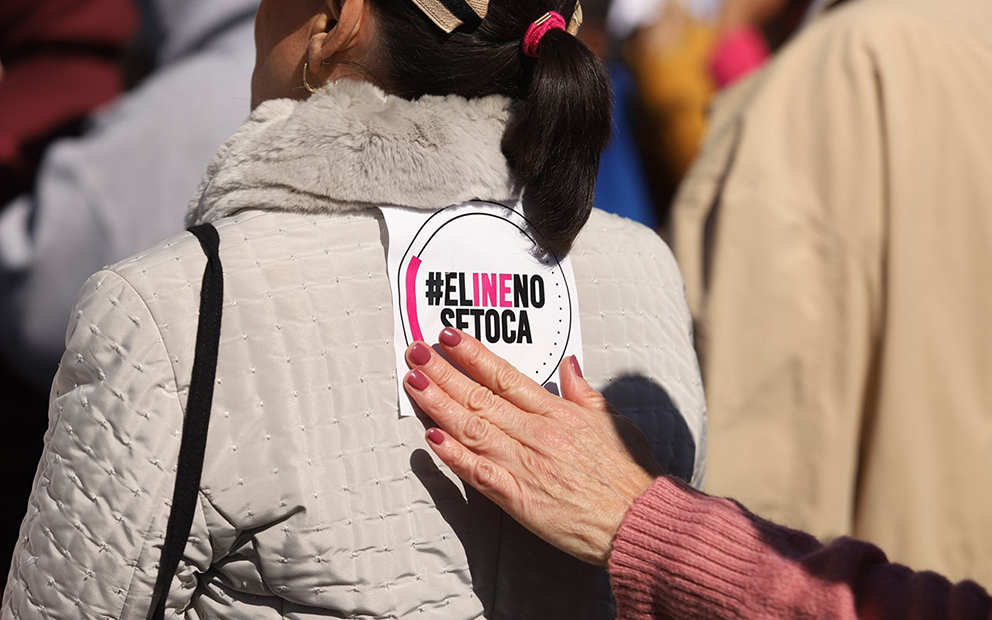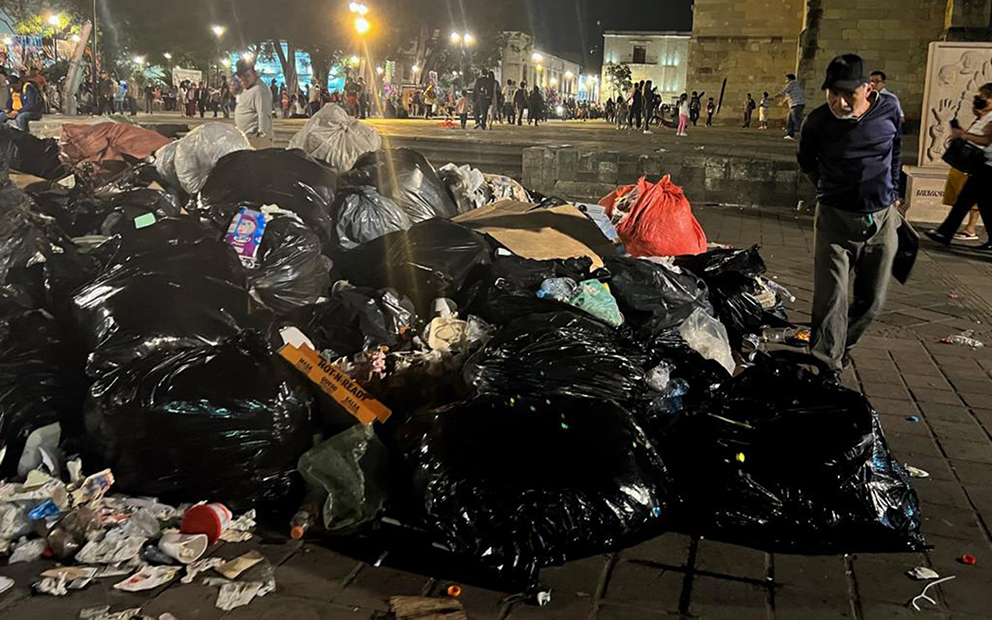Women football players in México were forbidden from earning more than US$750 a month until 2020, and their labor is performed in a very different situation from their male colleagues. Their struggle for better working conditions, according to experts, can’t take place on its own, rather “they must organize.”
Text by Silvia Isabel Gámez, originally published by Zona Docs on April 3, 2022.
Photo by Mexican Soccer Federation.
Translation by Dawn Marie Paley for Pie de Página in English.
On the occasion of the second Women’s Soccer World Championship in 1971, the entrances of Azteca Stadium were painted pink and white. During the inauguration, on August 15th, more than 80,000 fans watched the Mexican women beat the Argentines three to one. Women’s soccer had moved from the gravel fields, without bleachers or change rooms, to the largest sports stadium in the country.
That year, the “professional male games” rarely brought together 20,000 fans in a stadium, according to Brenda J. Elsey and Joshua H. Nadel in their book Futbolera.
One year earlier, Mexican women soccer players traveled to Italy where they placed third, beating England, in the first year of the Women’s World Championship organized by the International European Federation of Womens’ Soccer. Women players became a constant in the press.
Days before they played the 1971 final with Denmark, the Mexican women demanded pay for their work: if they didn’t receive two million pesos (US$100,000) they wouldn’t play. It was estimated that the league had made at least $9,000,000 (US$450,000) on ticket sales, television rights and souvenirs, according to Maritza Carreño.
The excuse not to pay the women was that they were amateurs. Instead of money, they were offered gifts of up to $5,000 pesos (US$250). Two days before the game, after a call from Octavio Sentíes, the regent of Mexico City, the women backed down on their demand for the good of “Mexico’s name.” The national team lost 3-0 in front of 90,000 people. The Danes won the Golden Angel.
Their pioneering struggle, according to sport historial Giovanni Pérez Uriarte, is linked to the current demands of women football players for fair pay. “They were the first to take on the battle to become professionalized,” he said. “They asked for pay, and that was a step forward. It meant recognizing them as workers and treating them as respectfully as the men are treated.”
Their struggle impacted women’s football. Starting in 1972, the women players disappeared from the media. The women had many leagues, but they couldn’t find stadiums to play in, and in an echo of what happened in the world championships, they didn’t get official recognition.
The International Federation of Association Football (FIFA), which then didn’t include women’s football in its rules, forbade the Mexican Football Federation (FMF) from organizing womens’ tournaments. “The FMF,” reads Futbolera “threatened to fine the clubs $25,000 pesos (US$1,250) if they let women’s teams practice or play on their fields.” Twenty years passed before FIFA’s first Women’s Football World Cup in China, which was won by the US team.
“It’s a story of oppression,” said Pérez Uriarte, “but also of a lot of resistance and transgression. In 1971, the foundations for a struggle that women players continue today was laid.”
“No one works for free”
In México, the salaries of women soccer players is a well kept secret. A tweet by journalist Vladimir Garcia said Katty Martínez, from the América team, is the best paid women player in México. She earns $130,000 (US $6,500) a month.
By comparison, the best paid male player in the Mexican League is Florian Thauvin, a winger for the Tigers. According to the portal Fichajes.com, he makes US$468,000 a month.
That disparity is reproduced internationally, as exemplified by the two winners of the Golden Ball in 2021. Alexia Putellas, the captain of Barcelona F.C., makes US$166,000 a year. Lionel Messi makes $45,500,000 dollars a year playing for Paris Saint Germain.
According to a 2017 Global Sports Salaries survey, during the 2017-2018 season players from the MX Women’s League made an average of $3,500 pesos (US$175) a month. The lowest paid men make $25,000 (US$1,250) monthly.
In May of 2019, México’s Federal Commission of Economic Competition (COFECE) removed a salary cap which existed beginning in November 2016, a month before the creation of the MX Womens’ League.
The agreement was made so that the teams would have “less competitive pressure while contracting players, as their competitors could not offer a higher salary,” according to minutes of the meeting. The salary cap initially meant that women players could only earn $2,000 a month (US$100), and $15,000 (US$750) a month the following year.
In September of 2021, the COFECE fined 17 teams and the FMF $177.6 million (US$8.8 million) for the “gentlemans’ pact” which impeded the players from freely negotiating their contracts.
The director of the MX Women’s League, Mariana Gutiérrez Bernárdez, said in an interview with As, without giving specifics, that based on their earnings women players are in the top six percent of earners in Mexico, according to data from the National Institute for Statistics and Geography (INEGI). That would mean that they would be earning a minimum of $15,000 (US$750) a month. Just one year ago, she continued to affirm that one of her objectives is that women players should have “real, professional” salaries.
The Mexican Association of Women Soccer Players (AMFpro) announced in February of last year that it was working on a proposal for a base salary for women and men players. There have been no advances in the proposal since.
Nicole Paredes, the head of Player Doce, an agency that represents twelve women players in the league, says that the lack of good working conditions means that women football players can’t give their all.
“This league isn’t a prototype or a project,” she said. “The women players, with a lot of effort, have improved their gameplay, becoming more competitive and attractive for sponsors and spectators. That should be accompanied by salary increases, because that’s what will put them on the path to true professionalization. They love what they do, but no one works for free or feeds their family because they love soccer.”
Economic violence
These kinds of discriminatory practices are a form of economic violelce, according to Zitlally Flores Fernández, a lawyer who is specializes in sporting law. “Very often [these pay gaps] aren’t even perceived as an issue that impacts women’s rights,” she said.
In México, there are legal avenues to combat salary discrimination, including the Constitution, the General Law for Women to Access a Life Free of Violence, and treaties like the International Agreement for Economic, Social and Cultural Rights.
Feminist lawyer Paulina Madero Suárez, who co-counded Transforma MyM, adds the Federal Law to Prevent and Eliminate Discrimination and the General Law for Equality between Men and Women to the list.
“In addition,” said Flores Fernández, “the General Law of Physical Culture and Sport should include a gender perspective, which at the moment it doesn’t have. This would make it a regulatory and protective framework for women players.”
In their 2020 report Raising Our Game, the International Federation of Professional Footballers urged the creation of “basic standards” in the labor conditions of women football players that would guarantee them “dignified, stable and secure employment.” It also calls for more investment in womens’ soccer and to find “creative ways” of marketing the sport.
“As a starting point,” says the report, “it is crucial that the professional status of women players be recognized. In other words, their participation should be recognized, first off, as a job.”
The report mentions various victories in the Australian men’s and women’s leagues and in the Ajax team in Amsterdam, which assure players a minimum salary.
In Chile, the creation of a union sped up the struggle for the professionalization of women’s soccer. In March, the National Association of Women Football Players celebrated the approval of a law passed by congress that forces teams to contract, in a three year window, the players that are part of their lineups.
In countries like England, Brasil, Ireland, Norway, Finland and the US, national women’s teams have made strides in their demands for equal pay, and now make the same as their male counterparts.
Given these examples, Flores Fernández, who is a professor and researcher at the Juárez University in the state of Durango, thinks the creation of a union could contribute to bettering the labor conditions of women soccer players in Mexico. “On their own they won’t make a change, they have to organize.”
The state should be part of this change, she says, because it is obligated to protect human rights, in this case the rights of women soccer players. And she suggests the possibility of using “strategic litigation” in order to achieve pay parity: use the labor tribunals, and once that’s been done, take their petition to the Supreme Court.
For her part, Madero Suárez says it’s not enough that the FMF include objectives like “encourage the development of women’s soccer and seek participation of women in all levels of football governance” in its statutes. If there aren’t specific actions established that can also be evaluated and allow for the implementation of these policies to be monitored, “it’s a dead letter.”
In order for the Women’s MX League to be “self-sustaining,” as Gutiérrez Bernárdez has said, there must be institutional backing, says Madero Suárez.
“There needs to be affirmative measures. If there’s no budget for women’s soccer and they establish policies to balance out the disparity between the leagues, that’s not progress. Equality has a price, and it requires processes.”
The Applause
The MX League is worth US$2.4 billion, according to its president Mikel Arriola. It’s the tenth largest in the world by size, and the sixth by number of fans in the stadiums.
Even though women players in Mexico are followed by 1.5 million people on social media, the pay gap is an issue “that has to be developed over years and months,” according to FMF president Yon de Luisa. In 2020, he said that if the teams had to raise salaries “for the ladies” the teams would disappear.
Gutiérrez Bernárdez’s speech last week at London’s International Sports Convention was not encouraging. “Visibility is the key word for women’s soccer. We need to see it to believe it can be professional… We’ve built the league, nwo we have to build the dream.”
In their 2021 Setting the Pace report, FIFA gathered information on 30 leagues and 282 teams around the world. It found that the yearly average earnings of each team in the MX Women’s League is US$259,000, and that 80 percent of the teams are experiencing financial loss.
Japan is the country where women’s teams earn the most, at US$1,650,000. The lowest are teams in Argentina, at US$32,000 and Thailand, at US$24,000.
The FIFA says there is an opportunity to make income through sponsorships, which it says are “not taken advantage of,” as 69 percent of women’s teams’ contracts are negotiated as part of a package with men’s teams.
In México, women’s soccer receives US$1.3 million from BBVA bank each year. Since 2013, the same bank has given US$10 million annually to the MX League. Both leagues are sponsored by Voit, Caliente and Tecate.
“The link between the women players and their fans is something that the teams should encourage, so that it is maintained and so that the audience grows,” said Paredes. “Fans should be able to go see the games and buy merchandise for their favorite female player.”
The economic health of the MX League shouldn’t be an obstacle to improving the working conditions of women players. According to Arriola, last year the league made a profit for the first year since 2016, beating its own expectations.
In 1920, the popular British team Dick, Kerr’s Ladies brought together 53,000 fans in Goodison Park in Liverpool. Women’s soccer brought in more income than men’s which was donated to wounded veterans of WWI, according to journalist Anuka Fernánda Fuks. The Soccer Association, which regulates the sport in England, decided to prohibit women’s teams, saying that it was “inadequate for women.”
That prohibition ended in 1971, the year of the Womens’ Football World Championship in Mexico, which was “a key moment in the history of women’s sport in Latin America,” according to Elsey and Nadel.
“The event, in terms of popularity but also sporting success, pushed back against paternalist affirmations that women’s sport is something recent. It also bucked the suggestion that women’s sport was unpopular and not marketable.”
But the problems with funding for women’s soccer don’t seem to have changed much since 1971, when writer Fernando Marcos asked how much of the profits went to Mexican women players, who were the “touchstone for this economic, sporting and event success.” His answer: “applause.”
***
This report is part of the Network of Unionized Women’s project “Women soccer players, human and labor rights: a view to the 2026 World Cup.”
This report was originally published by Zona Docs, which is part of the Media Alliance organized by Red de Periodistas de a Pie. You can read the original here.
Click here to sign up for Pie de Página’s bi-weekly English newsletter.
Ayúdanos a sostener un periodismo ético y responsable, que sirva para construir mejores sociedades. Patrocina una historia y forma parte de nuestra comunidad.
Dona


















